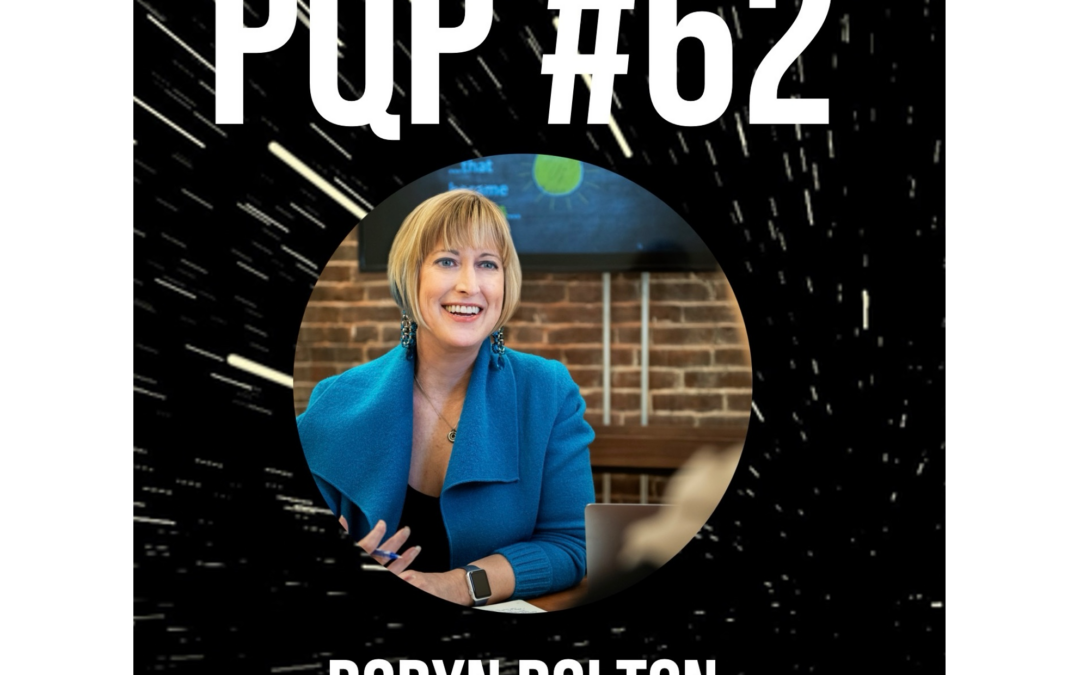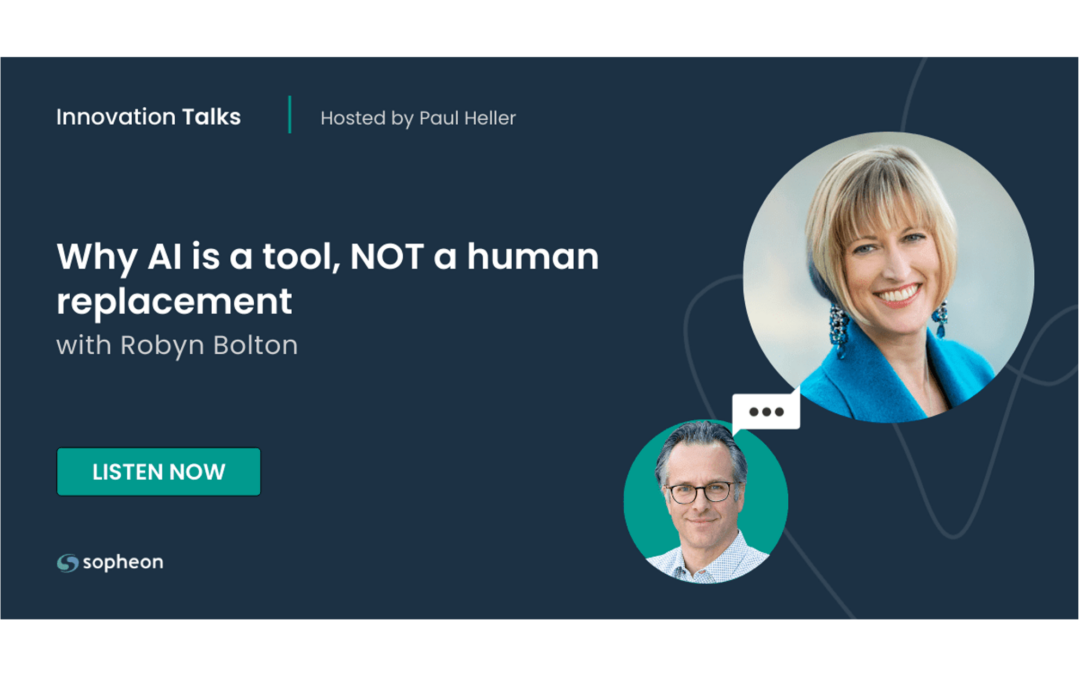


Innovation Talks

Eavesdrop Your Way to Millions: How Listening to Customers Unlocked Exponential Growth
It’s easy to get caught up in the hunt for unique insights that will transform your business, conquer your competition, and put you on an ever-accelerating path to growth. But sometimes, the most valuable insights can come from listening to customers in their natural environment. That’s precisely what happened when I eavesdropped on a conversation at a local pizza joint. What I learned could be worth millions to your business.
A guy walked into a pizza place.
Last Wednesday, I met a friend for lunch. As usual, I was unreasonably early to the local wood-fired pizza joint, so I settled into my chair, content to spend time engaged in one of my favorite activities – watching people and eavesdropping on their conversations.
Although the restaurant is on the main street of one of the wealthier Boston suburbs, it draws an eclectic crowd, so I was surprised when a rather burly man in a paint-stained hoodie flung open the front door. As he stomped to the take-out order window, dust fell from his shoes, and you could hear the clanging of tools in his tool belt. He placed his order and thumped down at the table next to me.
A Multi-Million Dollar Chat
He pulled out his cell phone and made a call. “Hey, yeah, I’m at the pizza place, and they need your help. Yeah, they hate their current system, but they don’t have the time to figure out a new one or how to convert. Yeah, ok, I’ll get his number. Ok if I give him yours. Great. Thanks.”
A few minutes later, his order was ready, and the manager walked over with his pizza.
Hoodie-guy: “Hey, do you have a card?”
Manager: “No, I don’t. Something I can help you with?”
H: “I just called a friend of mine. He runs an IT shop, and I told him you’re using the RST restaurant management system, and you hate it…”
M: “I hate it so much…”
H: “So my buddy’s business can help you change it. He’s helped other restaurants convert away from RST, and he’d love to talk to you or the owner.”
M: “I’m one of the co-owners, and I’d love to stop using RST, but we use it for everything – our website, online ordering, managing our books, everything. I can’t risk changing.”
H: “That’s the thing, my friend does it all for you. He’ll help you pick the new system, set it up, migrate you from the other system, and ensure everything runs smoothly. You have nothing to worry about.”
M: “That would be amazing. Here’s my direct line. Have him give me a call. And if he’s good, I can guarantee you that every other restaurant on this street will change, too. We all use RST, and we all hate it. We even talked about working together to find something better, but no one had time to figure everything out.”
They exchanged numbers, and the hoodie guy walked out with his pizza. The manager/owner walked back to the open kitchen, told his staff about the conversation, and they cheered. Cheered!
Are You Listening?
In just a few minutes of eavesdropping, I uncovered a potential goldmine for a B2B business – 15 frustrated customers, all desperate to switch from a system they hate but unable to do so due to time and resource constraints. The implications are staggering – an entire local market worth tens of millions of dollars ripe for the taking simply by being willing to listen and offer a solution.
As a B2B leader, the question is: are you truly tapping into the insights right in front of you? When was the last time you left your desk, observed your customers in their natural habitat, and listened to their unvarnished feedback? If you’re not doing that, you’re missing out on opportunities that could transform your business.
The choice is yours. Will you stay in your office and rely on well-worn tools, or venture into the wild and listen to your customers? Your answer could be worth millions.

The Surprising Downside of Collaboration in Problem-Solving
You are a natural-born problem solver. From the moment you were born, you’ve solved problems. Hungry? Start crying. Learning to walk? Stand up, take a step, fall over, repeat. Want to grow your business? Fall in love with a problem, then solve it more delightfully than anyone else.
Did you notice the slight shift in how you solve problems?
Initially, you solved problems on your own. As communication became easier, you started working with others. Now, you instinctively collaborate to solve complex problems, assembling teams to tackle challenges together.
But research indicates your instincts are wrong. In fact, while collaboration can be beneficial for gathering information, it hinders the process of developing innovative solutions. This counterintuitive finding has significant implications for how teams approach problem-solving.
What a Terrorism Study Reveals About Your Team
In a 2015 study, researchers used a simulation developed by the U.S. Department of Defense to examine how collaboration impacts the problem-solving process. 417 undergrads were randomly assigned to 16-person teams with varying levels of “interconnectedness” (clarity in their team structure and information-sharing permissions) and asked to solve aspects of an imaginary terrorist attack scenario, such as identifying the perpetrators and target. Teams had 25 minutes to tackle the problem, with monetary incentives for solving it quickly.
Highly interconnected teams “gathered 5 percent more information than the least-clustered groups because clustering prevented network members from unknowingly conducting duplicative searches. ‘By being in a cluster, individuals tended to contribute more to the collective exploration through information space—not from more search but rather by being more coordinated in their search,’”
The Least Interconnected teams developed 17.5% more theories and solutions and were more likely to develop the correct solution because they were less likely to “copy an incorrect theory from a neighbor.”
How You Can Help Your Team Create More Successful Solutions
You and your team rarely face problems as dire as terrorist attacks, but you can use these results to adapt your problem-solving practices and improve results.
- Work together to gather and share information. This goes beyond emailing around research reports, interview summaries, and meeting notes. “Working together” requires your team to take action, like conducting interviews or writing surveys, with one another in real-time (not asynchronously through email, text, or “collaboration” platforms).
- Start solving the problem alone. For example, at the start of every ideation session, I ask people to spend 5 minutes privately jotting down their ideas before group brainstorming. This prevents copying others’ theories and ensures all voices are heard. (not just the loudest or most senior)
- Invite the “Unusual Suspects” into the process. Most executives know that diversity amplifies creativity, so they invite a mix of genders, ages, races, ethnicities, tenures, and industry experiences to brainstorming sessions. While that’s great, it also results in the same people being invited to every brainstorm and, ultimately, creating a highly interconnected group. So, mix it up even more. Invite people never before invited to brainstorming into the process. Instead of spending a day brainstorming, break it up into one-hour bursts at different times of the day.
Are You Willing to Take the Risk?
For most of your working life, collaboration has been the default approach to problem-solving. However, this research suggests that rethinking when and how to leverage collaboration can lead to greater success.
Making such a change isn’t easy – it invites skepticism and judgment as it deviates from the proven “status quo” process.
Are you willing to take that risk, separating information gathering from solution development, for the potential of achieving better, more innovative outcomes? Or will you remain content with “good enough” solutions from conventional methods?

Dear Nike CEO: Stop Blaming Working from Home for Your Innovation Struggles
“But even more importantly, our employees were working from home for two and a half years. And in hindsight, it turns out, it’s really hard to do bold, disruptive innovation, to develop a boldly disruptive shoe on Zoom.” – John Donahoe, Nike CEO
I am so glad CNBC’s interview with Nike’s CEO didn’t hit my feed until Friday afternoon. It sent me into a rage spiral that I am just barely emerging from. Seriously, I think my neighbors heard the string of expletives I unleashed after reading that quote, and it wasn’t because it was a lovely day and the windows were open.
Blaming remote work for lack of innovation is cowardly. And factually wrong.
I’m not the only one giving Mr. Donahoe some side-eye for this comment. “There were a whole bunch of brands who really thrived during and post-pandemic even though they were working remotely,” Matt Powell, advisor for Spurwink River and a senior advisor at BCE Consulting, told Footwear News. “So I’m not sure that we that we can blame remote work here on Nike’s issues.”
There’s data to back that up.
In 2023, Mark (Shuai) Ma, an associate professor at the University of Pittsburgh, and Yuye Ding, a PhD student at the university’s Katz Graduate School of Business, set out to empirically determine the causes and effects of a firm’s decision to mandate a return to work (RTO). They collected RTO mandate data from over 100 firms in the S&P 500, worked backward to identify what drove the decision, and monitored and measured the firm’s results after employees returned to work.
Their findings are stark: no significant changes in financial performance for firm value after RTO mandates and significant declines in employee job satisfaction. As Ma told Fortune, “Overall, our results do not support these mandates to increase firm values. Instead, these findings are consistent with managers using RTO mandates to reassert control over employees and blame employees as a scapegoat for firm bad performance.”
Or to justify spending more than $1B to double the size of its Beaverton, OR campus.
When you start blaming employees, you stop being a leader.
CEOs make and approve big, impactful, complex, high-stakes decisions. That’s why they get paid the big bucks. It’s also why, as Harry Truman said, “The buck stops here.”
Let’s examine some of the decisions Mr. Donahue made or supported that maybe (definitely) had a more significant impact on innovation than working from home two days a week.
Ignoring customers, consumers, and the market: Nike has a swagger that occasionally strays into arrogance. They set trends, steer culture, and dictate the rules of the game. They also think that gives them the right to stop listening to athletes, retailers, and consumers, as evidenced by the recently revealed Team USA Track & Field uniforms, the decision to stop selling through major retailers like Macy’s and Olympia Sports, and invest more in “hype, limited releases, and old school retro drops” than the technology and community that has consumers flocking to smaller brands like Hoka and Brooks.
Laying off 2% of its workforce: Anyone who has ever been through a layoff senses it’s coming months before the announcement and the verdicts are rendered. Psychological safety, feeling safe in your environment, is a required element for risk-taking and innovation. It’s hard to feel safe when saying goodbye to 1500 colleagues (and wondering if/when you’ll join them).
Investing too much in the core: Speaking of safety, in uncertain times, it’s tempting to pour every resource into the core business because the ROI is “known.” Nike gave in to that temptation, and consumers and analysts noticed. Despite recent new product announcements like the Air Max DN, Pegasus Premium, and Pegasus 41, “analysts point out these ‘new’ innovations rely too much on existing franchises.”
Innovation is a leadership problem that only leaders can solve
Being a CEO or any other senior executive is hard. The past four years have been anything but ordinary, and running a business while navigating a global pandemic, multiple societal upheavals, two wars, and an uncertain economy is almost impossible.
Bosses blame. Leaders inspire.
Mr. Donohue just showed us which one he is. Which one are you?
One MORE thing
This is a losing battle, but STOP USING “DISRUPTIVE” INCORRECTLY!!!! “Disruptive Innovation,” as defined by Clayton Christensen, who literally coined the phrase, is an innovation that appeals to non-consumers and is cheaper and often lower quality than existing competitors.
Nike is a premium brand that makes premium shoes for premium athletes. Employees could spend 24/7/365 in the office, and Nike would never develop and launch a “boldly disruptive shoe.”